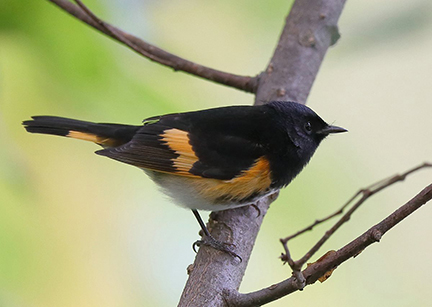
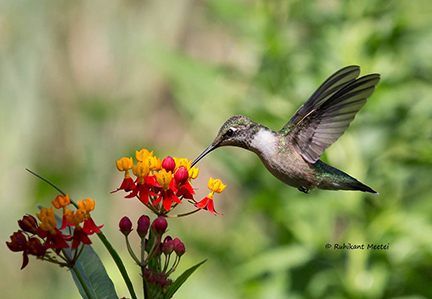
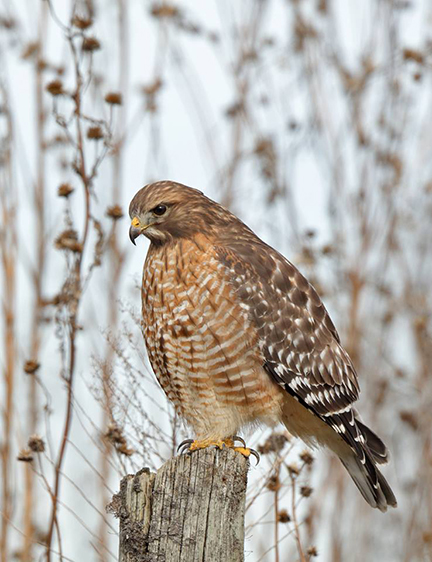
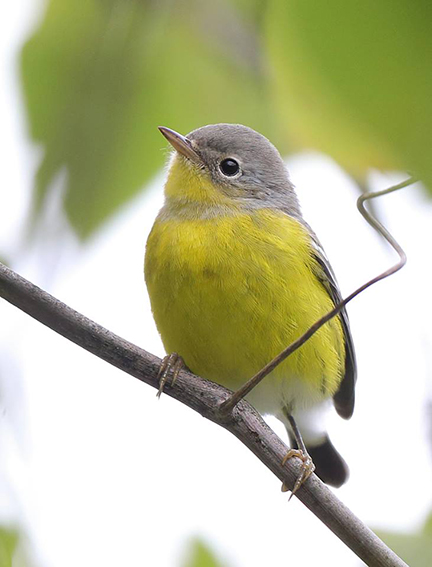
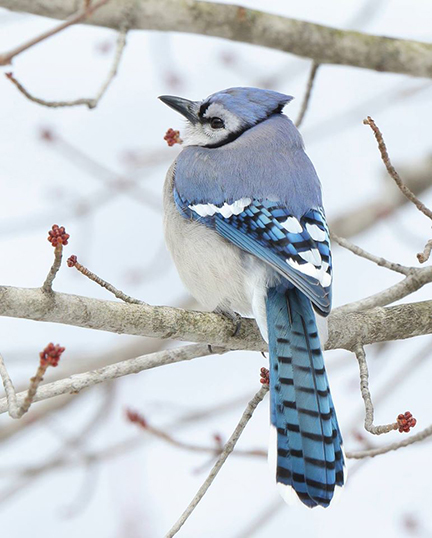
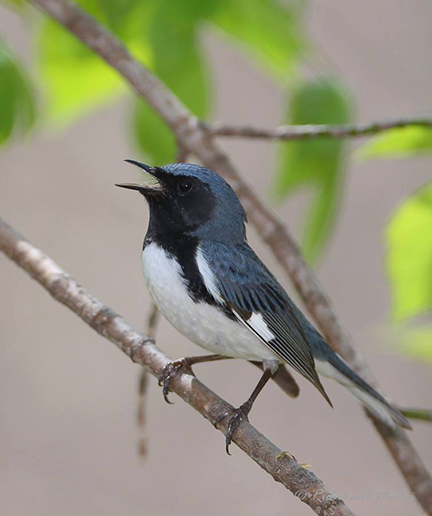
As summer gives way to fall, many birds begin to move from their spring and summer breeding grounds to their winter homes. This is a good time to watch and help birds make this seasonal transition. Here are answers to the top 5 questions about fall bird migration.
1. Do all birds migrate?
No. Some birds, such as the Northern cardinals and Hairy Woodpeckers, don’t need to migrate because they can find food in their home ranges throughout the winter.
2. When does fall migration begin?
That depends on where you live. Seasonal changes start in early September through late November, although birds in the Arctic begin migrating much earlier. Even in northern regions, migration varies even though the dwindling number of daylight hours is the same from year to year.
3. Why do birds migrate in fall?
The decreasing number of hours of light and cooler temperatures both help birds know it’s time to get moving! But the most important reasons for migration are changes in food sources, especially insects, and changes in nesting locations as trees lose their leaves. The weather can also play a role. For example, drought conditions may make food and water harder to find, so birds leave earlier than in years with sufficient rainfall.
4. How far do birds migrate?
It depends on the bird. Short-distance migrants, such as blue grouse, bridled titmouse, and northern bobwhite, may simply change altitudes, heading to lower elevations for winter. Medium-distance birds, including blue jay, eastern bluebird, killdeer, and white-crowned sparrow, roam around to find better conditions but generally stay within North America. Some 350 species are considered long-distance “neotropical” migrants, spending summers in the U.S. and Canada, then wintering in warmer climates from the Caribbean to northern parts of South America. These include raptors, vultures, waterfowl, shorebirds, hummingbirds, thrushes, warblers, orioles, and tanagers, according to the Cornell Lab of Ornithology. The winners in the long-distance category are whooping cranes and Arctic terns, which can travel 2,500 miles and as much as 24,000 miles, respectively. The Cornell Lab of Ornithology says that birds migrate using a variety of techniques, including “navigation by the stars, sensing changes in the earth’s magnetic field, and even smell.”
5. What time of day do birds fly?
Some fast fliers, such as hummingbirds, finches, swifts, swallows, birds of prey, pelicans and herons, are considered diurnal, or daytime migrants. Others are nocturnal, taking off within an hour of sunset and flying through the night. These include waterbirds, cuckoos, flycatchers, thrushes, warblers, orioles and buntings.
Help our migrating birds!
Migrating birds bulk up and add fat so they have enough fuel to take them on their long journey, so providing food to help them can help. Because bright lights can disorient night migrating birds, turn off lights that aren’t needed, and encourage owners of tall buildings in your community to do the same. Landscape your yard with fall in mind, adding plants that produce fruit or seeds for food. Finally, check out online resources: https://www.allaboutbirds.org/news/,
https://www.audubon.org/birding or https://ebird.org/home.
Where can I learn more?
Learn more about fall migration at Aullwood on Saturday, September 25 from 2:00 p.m. – 4:30 p.m. for our Fall Migratory Bird Walk. September is the best month for seeing a wide variety of migrating songbirds including warblers, flycatchers, thrushes, vireos and sparrows. You may even spy a kettle of Broad-winged Hawks passing through! Join Sam Romeo, Environmental Educator, for a walk to look for these elusive birds, many of which have molted into camouflage to help them survive their passage south. Binoculars are recommended. This event begins in front of the Nature Center. You must preregister by calling 937-890-7360 or register on Aullwood’s website at aullwood.org. Free for members of Aullwood, NAS and ANCA members; non-members may register and pay our general admission prices to participate. Please arrive 5 minutes before the scheduled start time. (Center)
_______
Since 1957, Aullwood Audubon’s mission has been to teach, lead, and inspire people to preserve, protect and enjoy nature, farming and the environment. Our hope for the future is the children and the youth of today and engaging them in education and experiences about nature, wildlife, birds and the earth. You can learn more about Aullwood at www.aullwood.org or come and visit Aullwood at the Nature Center, 1000 Aullwood Road, Dayton, OH or Aullwood Farm, 9101 Frederick Pike, Dayton, OH. We are open Tuesday – Saturday, 9:00 a.m. – 5:00 p.m. and Sunday, 1:00 p.m. – 5:00 p.m.




